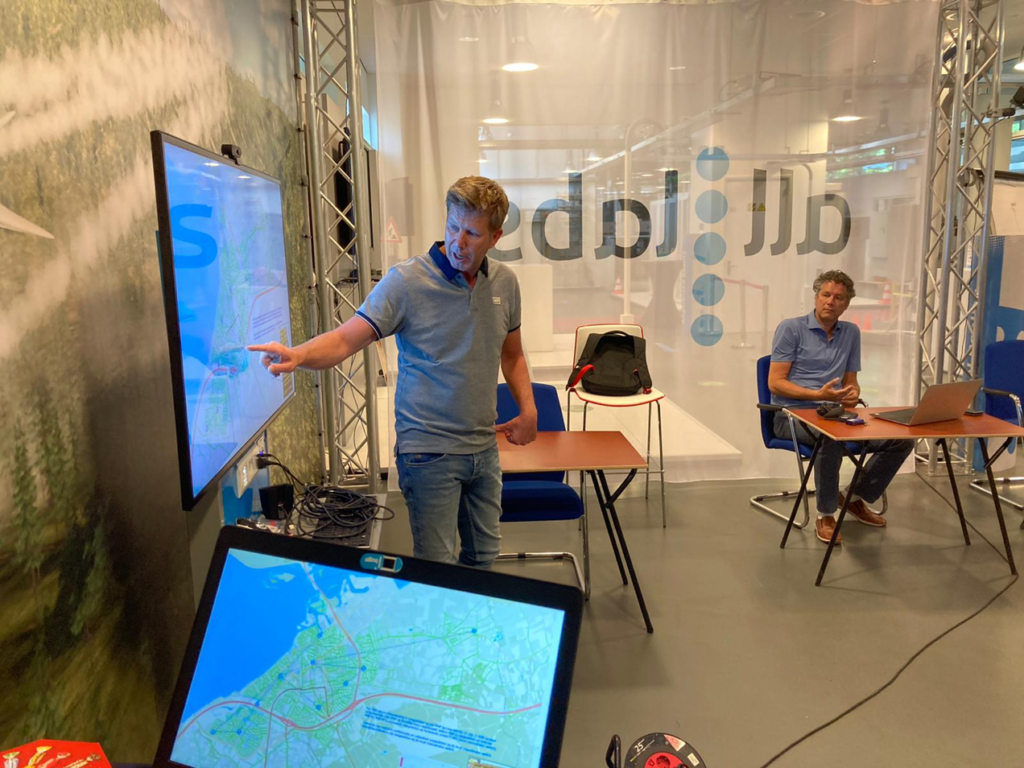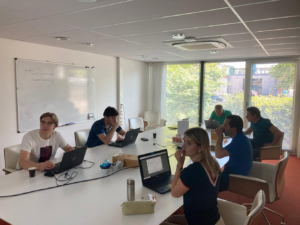A hackathon aimed at the future
2 November 2021
In June, Allinq and CAI Harderwijk organised a joint hackathon. Goal: to collect and share new insights into smart asset management. Theme: what is the correlation in the network between the performances of the switches and incidents, temperature, and energy? How does asset X perform under condition Y?

The hackathon participants were Director Edo Kweldam and Technical Manager Jerry Docter from CAI Harderwijk, together with six analysts and Project Manager Jasper Habermehl from Allinq. The venue was the Allinq branch in Harderwijk: ”a small party. We were allowed to get close and personal for the first time after the lockdown.”
No worries
The hackathon was also special for another reason. Normally you organise something like this when there is a direct cause. A problem occurs and a group of specialists is brought in to analyse and solve it as quickly as possible. In this case, there was no emergency. Just two parties wanting to help each other to advance and develop. “We wanted to find out what CAI Harderwijk’s data contains,” says Jasper. “Which measurements can we take from that, and which conclusions can we draw from them?”
Millions of puzzle pieces
Edo: “We had met a few times beforehand to define certain objectives. The most important thing for us is: which data do we actually have? And what exactly could you do with it? Our programme does collect data, but it doesn’t analyse it.” No shortage of data: “Imagine a network with 300 sensors, spread over all kinds of devices. All those sensors have their own ID. Each sensor records data in maybe 10 columns about the temperature, the energy, the light intensity of the fibre optic, the occupancy, and so on.” Clear as day. So, millions of measuring points. And it can get even more exciting: “CAI’s sensors were not given an ID according to a fixed structure. That means that you can’t see in an analysis which data in the network has a mutual relationship. So, you can’t determine exactly what is influencing what.”
Data wizards
Allinq’s programmers were able to roll up their sleeves and get to work. The morning of the hackathon was spent analysing and structuring the data. Jasper describes it with amazement: “We came a really long way. At two o’clock in the afternoon, there was a fully structured database. With everything that happened in the past year in measurement data.” Then it was discussed which topics you could zoom in on using the data. “There were two categories of programmers. The data engineers who structure the data, and the data scientists who extract information from it.” They were ready at four in the afternoon. The results of a hard day’s work could be put on the table.

Well-prepared
And what were the results? Jasper explains: “We saw exactly what the downtime of the system was. So, when the PRTG monitoring of the network was disabled. We could also see the different ping times. How long it takes for a device to receive a signal. And that for each device. These differences are minimal, and the customer doesn’t notice much. But if more bandwidth is ever required, that difference may be measurable.” And in the context of asset management? Have improvements or recommendations been rolled out for this? “The gain is mainly that we learn how to deal with that stack of data. The structure is now ready. You can now get started. If there is ever a problem with asset X or Y, we know that you can start analysing it this way. Those problems don’t exist now. This is more proof that the equipment is good, that the system is well maintained, and that it does what it’s supposed to do.”
Useful lessons
Edo endorses the findings. He also draws another conclusion: “If you build that type of structure yourself, with all those sensors in your network, it makes sense to think about what you call it all. We never did that. We just started building. It helps enormously when structuring the data if you take this into account in good time.” Many of the experiences and conclusions during the day are familiar: “There were things we already knew. That’s also because we’re only a small group. There are four of us in the office, and we’re a knowledge organisation rather than a process organisation. We’re close to the processes that we have, and we often see the deviations. As CAI Harderwijk, we may not benefit very much from it in that sense. However, it is something you can do a lot with in a larger network. I can certainly imagine that at a larger company you could get things out of this that people simply don’t learn from a process. Things that you can tell them before problems arise.”
Other customers
They both agree. Besides the results, the day itself was also very enlightening. And very special. Edo: “Our scale makes us a great testing ground for a pilot like this. We were all so close to the action that you could easily turn left or right if necessary. Shouldn’t we do something with this? Or with that?” Jasper: “We were able to look at all the CAI data free from format. What’s this we’re looking at? How should we structure it so that we can translate it into useful outcomes? We’re now also using those experiences for other customers.
